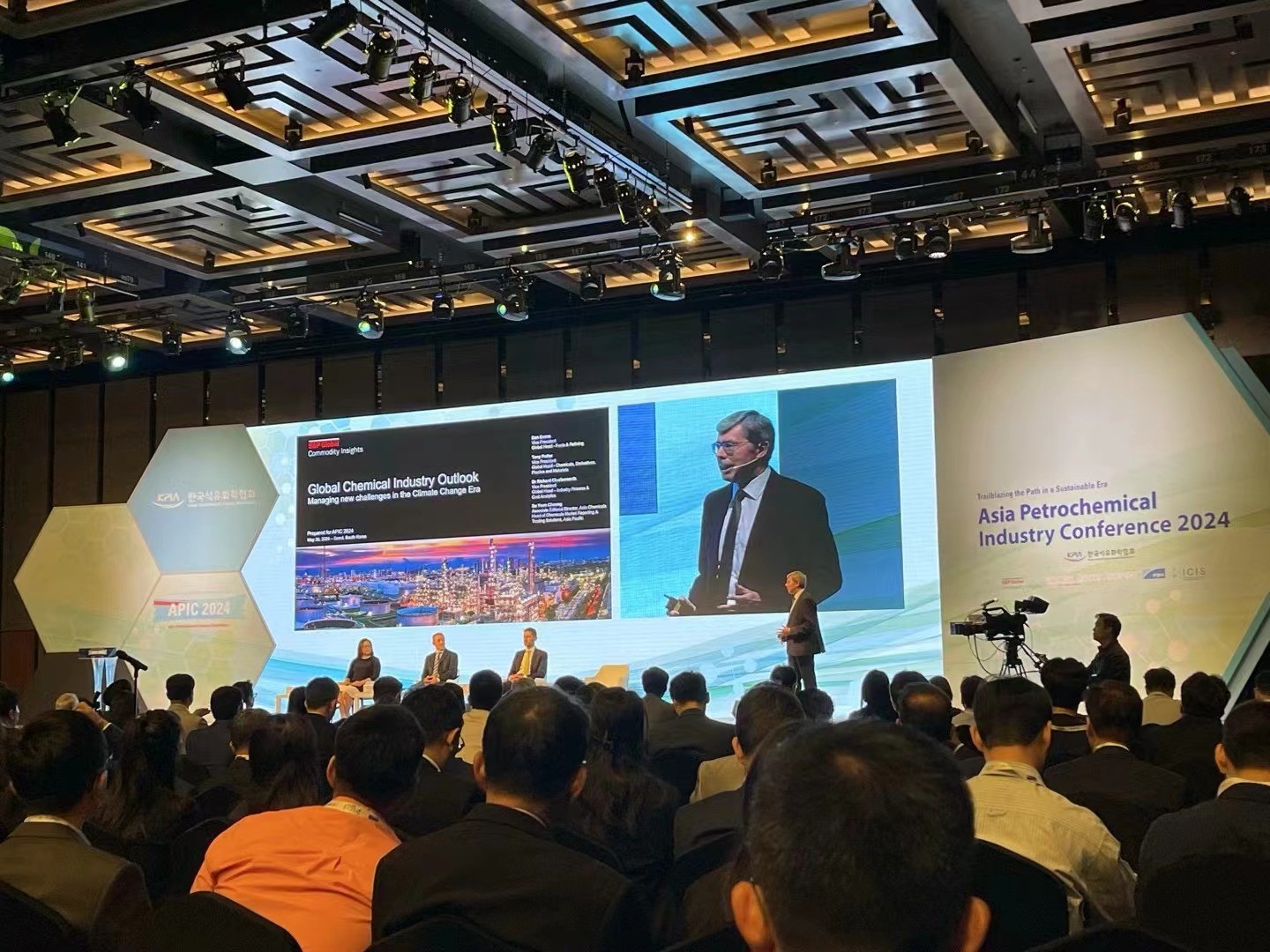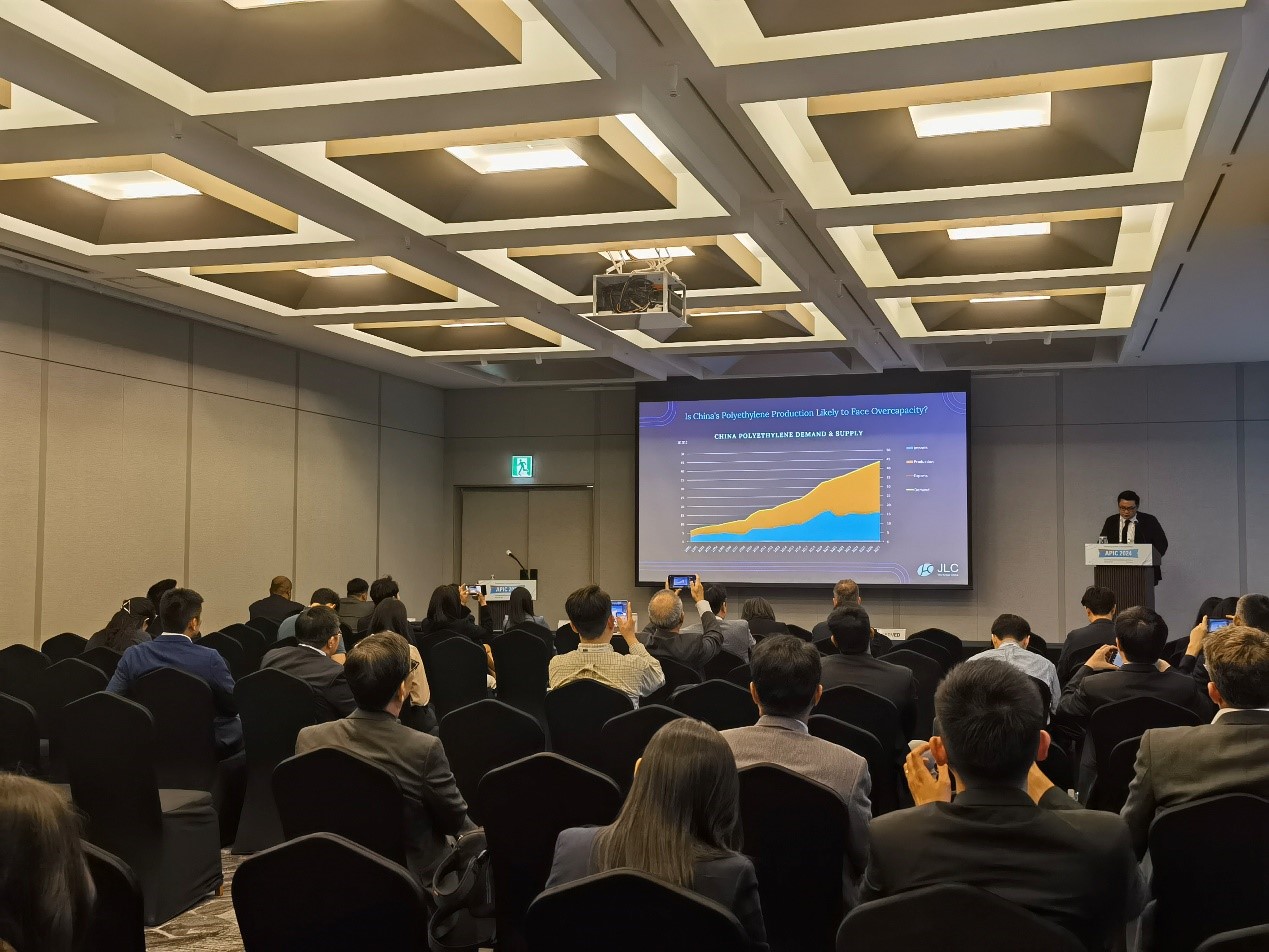Guangzhou (JLC), May 31, 2024 – As the only invited Chinese speaker at the 2024 Asia Petrochemical Industry Conference (APIC) held on May 30-31 in Korea, JLC shared its insights into the polyethylene (PE) industry and delved into the prospects for related ethylene-vinyl acetate (EVA) and polyolefin elastomers (POE) industries.

Panel discussion on the opening day
Stoney Shi, a senior manager at JLC International, delivered a speech entitled “Evolution and Forthcoming Changes in China Polyethylene Markets” at the APIC polyolefins seminar held on May 31.

Stoney Shi shares his insights into China’s polyolefins industry
China’s apparent consumption of PE has been steadily rising over the past decade, he said. The apparent consumption is expected to increase 2.5% to 40.92 million mt in 2024 and will likely grow in the coming years. In 2027, it is expected to reach 44.98 million mt.
Domestic production has been growing along with capacity expansion since 2014. The production is expected to gain 6.2% to 29 million mt in 2024. It will continue to grow and is forecast to reach 36.80 million mt in 2027, he said.
However, operating rates are expected to decline as a result of higher capacity.
Last year, coal-based olefin producers enjoyed much higher profit margins than oil-based olefin producers, Stoney said. Polyolefins, especially PE and PP, showed high sensitivity to fluctuations in raw material prices, he added.
Promising outlook for POE
China's consumption of polyolefin elastomers (POE) increased from 307,000 mt in 2019 to 859,000 mt in 2023, entirely dependent on imports. The compound annual growth rate of China's POE resin consumption from 2019 to 2023 was about 29.33%, showing robust growth, Stoney said.
This uptrend is expected to continue over the next five years, with consumption expected to exceed 1 million mt in 2024 and reach 1.7 million mt by 2028.
In 2023, the solar photovoltaic (PV) sector consumed about 54.8% of the overall POE supply, he said.
POE and EVA are both popular materials used in solar panels and car parts. Demand for them has been on the rise with the booming of the new energy vehicle (NEV) and photovoltaic industry in recent years, JLC previously reported. POE film outperforms EVA in several aspects, including multi-volume resistivity, water vapor permeability, and aging resistance.
Starting from 2024, China will gradually put some POE projects into operation. Nevertheless, China’s self-sufficiency rate for POE is not expected to exceed 25% by 2028, based on high demand growth projections, he added.
In comparison, China’s self-sufficiency rate for EVA resin has been over 60% since 2022. The EVA self-sufficiency rate is expected to reach 68.5% in 2024 and 76.8% in 2028.
Themed “Trailblazing the Path in a Sustainable Era”, this petrochemical conference provided a platform for petrochemical industry players to explore business opportunities and share their views on the global market, with different seminars taking place at the same time.

